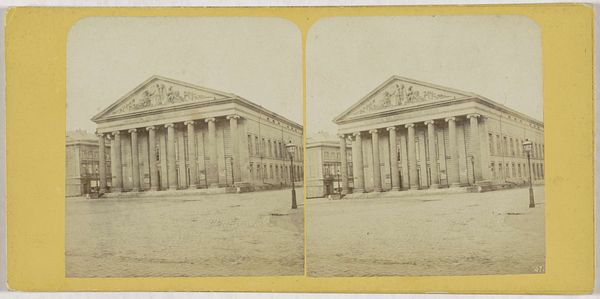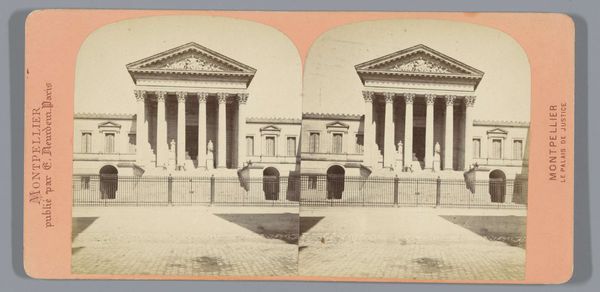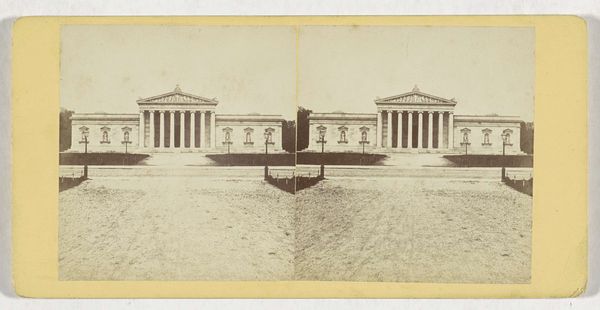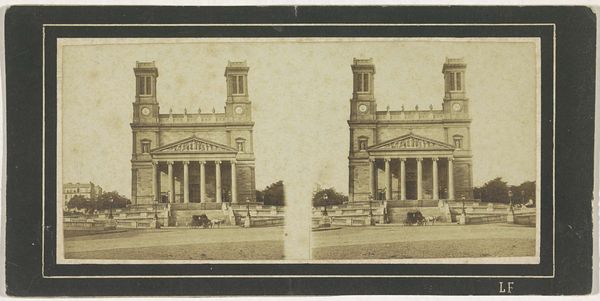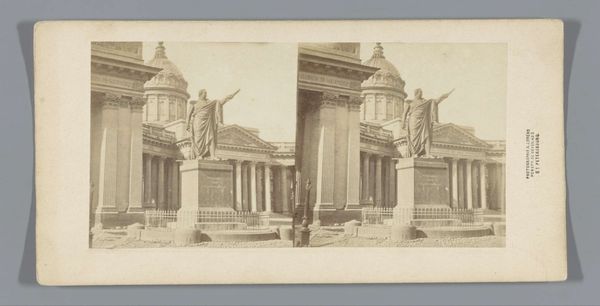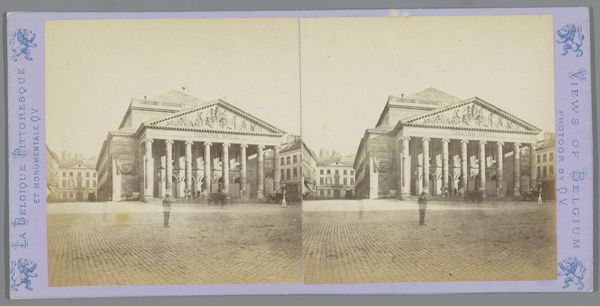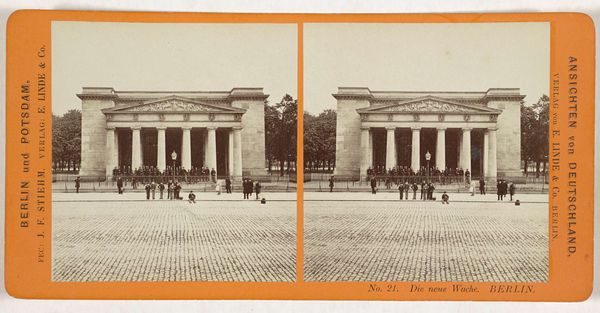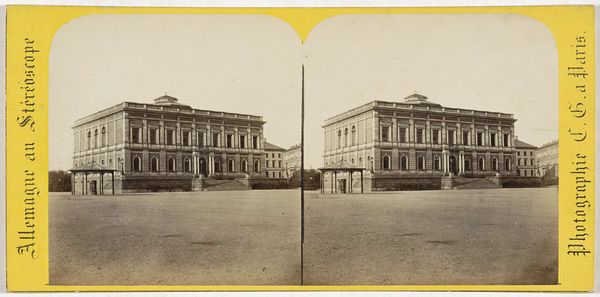
Nationaal theater en het standbeeld van Maximiliaan I op het Max-Joseph-Platz in München, Duitsland 1868
0:00
0:00
Dimensions: height 85 mm, width 174 mm
Copyright: Rijks Museum: Open Domain
Curator: This steroscopic card image from 1868 presents the National Theater and the statue of Maximilian I on Max-Joseph-Platz in Munich, Germany. It's attributed to Charles Gaudin. The card uses the stereoscope format, popular at the time, giving a 3D effect when viewed through the proper device. Editor: It’s incredibly rigid and monumental, isn’t it? All those evenly spaced columns and that very solid-looking statue. It feels like it's screaming about power and order. Almost intimidating in its symmetry and imposing scale. Curator: Indeed. It embodies Neoclassicism. The National Theater, opened in 1818, was built under King Maximilian I Joseph of Bavaria. Neoclassical architecture, particularly in public buildings, aimed to project stability, authority, and a connection to the glories of ancient Greece and Rome. Editor: Makes you think about what narratives are literally being set in stone, or rather, in bronze. Who gets commemorated and whose stories get amplified in the public square, and how does it reinforce the prevailing power structures? Curator: That's a valid question. Maximilian I was Bavaria's first king, modernizing the state and raising its status during the Napoleonic Wars. His statue is, of course, a celebration of that leadership. Editor: Absolutely, and in 19th-century Europe, this kind of iconography became very common. We still see it today, but looking at these structures reminds us that it is vital to question who creates these dominant narratives. Whose history really matters when choosing what's portrayed in prominent artwork? Curator: Very well said. I think in the specific context of this period the push to record views using photography can be understood in terms of growing tourist industry but equally in an interest to provide a very material record of cities undergoing major redevelopment. Editor: Looking at this stereoscopic card, I realize how photography can freeze moments that are filled with a great significance and the impact art has to influence ideologies of social movements through time. Curator: Exactly. That connection makes this image more than just a historical artifact, but rather a document that keeps telling an important story. Editor: An evolving story, constantly re-interpreted and re-evaluated. Food for thought, indeed!
Comments
No comments
Be the first to comment and join the conversation on the ultimate creative platform.
